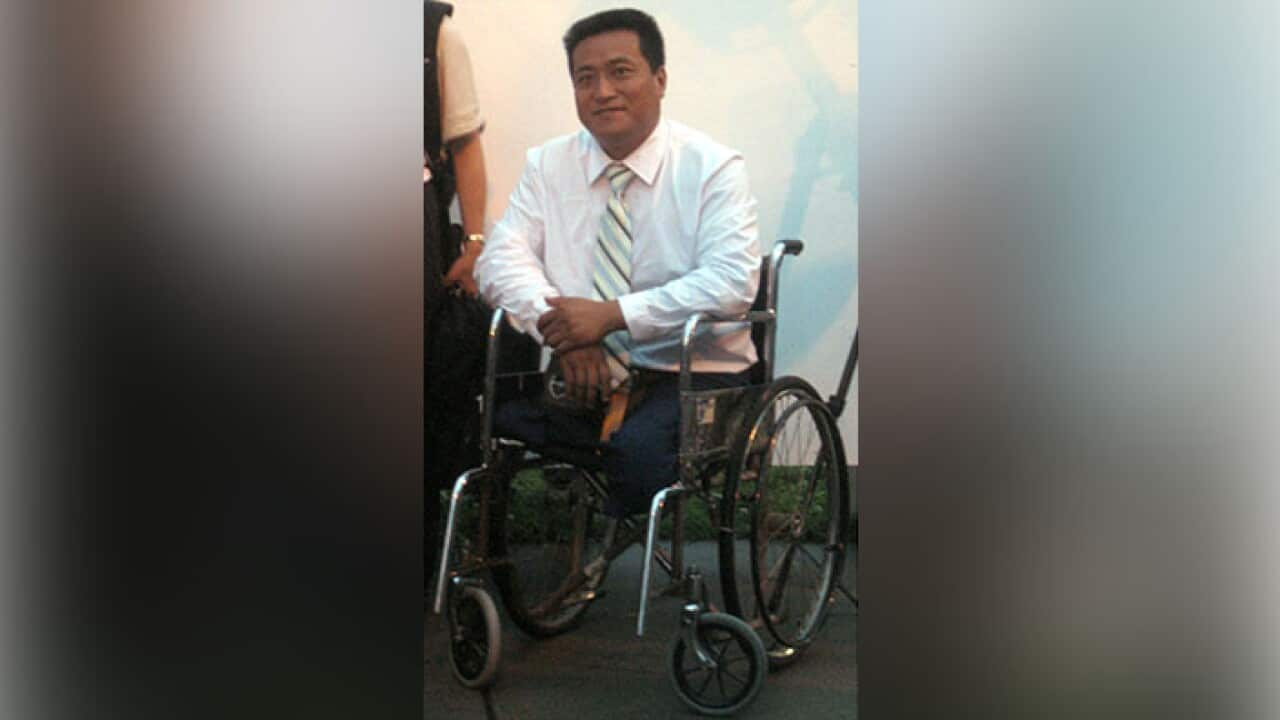It was perhaps the most memorable and iconic moment of the Tiananmen Square massacre on June 4, 1989, when "tank man" - an unidentified protester - stood in front of a convoy of tanks leaving Tiananmen Square during the Chinese military crackdown.
After seven weeks of protests by students and workers demanding democratic changes, soldiers and tanks chased and killed demonstrators and onlookers in the streets leading to the square.
The incident involving "tank man", which has been immortalised internationally over the three decades since the protests, was used by the Chinese government to support its claims that the military did not injure protesters with their tanks during the crackdown of the Chinese Democracy Movement demonstrations. Speaking with SBS Cantonese, Fang Zheng, one of the student protesters, said he was the "living evidence" that the Chinese army did in fact use tanks to target peaceful protesters.
Speaking with SBS Cantonese, Fang Zheng, one of the student protesters, said he was the "living evidence" that the Chinese army did in fact use tanks to target peaceful protesters.

A Chinese man blocks military tanks on Changan Avenue, near Tiananmen Square in Beijing, June 5 1989. Source: SBS
It was just before 6am on June 4, 1989, when the protesters had begun to evacuate from the square, that the army attacked the students. Mr Fang says the army tanks moved towards them from behind in no time, consequently seriously injured the protesters - leading to injuries which caused the amputation of both of his legs.
Mr Fang says he was just a participant in the democracy movement. But his life was turned upside down following the injury.
"The use of tanks was never expected. At that time, students were evacuating peacefully and orderly, since the clearance of the square and the suppression were almost over," he says.
"So there were no signs at all that the tanks will be dispatched."
He says the question that he's been asking the Chinese government for years is: Why did the tanks attack and run over students and protesters from the back while they were peacefully evacuating the square?.
Over the past 30 years, activists have longed for the Chinese government to publicise the number of casualties from the "June 4th Incident", as it's referred to in China.
"It was relatively late when I arrived at the hospital. The army opened fire, which caused a lot of casualties, between 10pm on the 3rd and early morning on the 4th. This was way before I was injured."
"This was why when I arrived at the hospital, a large number of injured were already there."
Due to insufficient beds in the ward, Mr Fang was asked to lie on the floor in the hospital's conference room with many other injured protestors already inside. The doctor told him that the blood bank in the hospital had been exhausted, while medical equipment was being used to treat other patients.
The doctor told him that the blood bank in the hospital had been exhausted, while medical equipment was being used to treat other patients.

June1989: File pic shows Beijing two days after the Tiananmen Square massacre. Source: AAP
The total number of casualties in the Tiananmen Incident remains a mystery after 30 years, while there are many different versions and rhetorics floating around.
"Some say 800, some 3,000, and diplomatic documents by the United States also claim that there were more than 10 thousand dead," he says.
"These figures are nowhere to be confirmed and verified because the Chinese government have for years deliberately concealed the truth and blocked any information flow.
"That is why, I and other democracy activists have been working hard for many years, insisting on pursuing the truth."

Source: Li Gang






